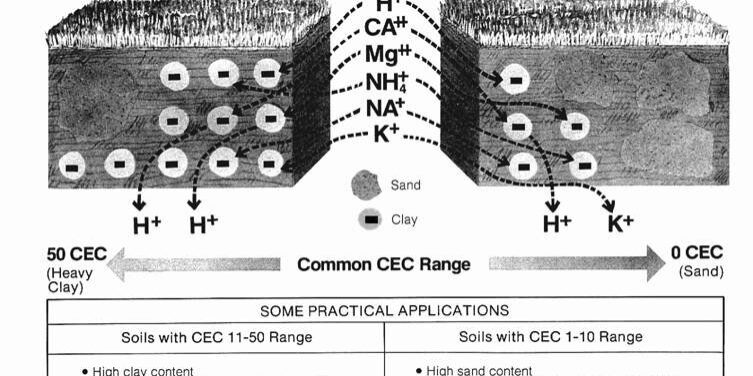Soil Health Friday
One of the keys to understanding soils and nutrient cycling is understanding what gives structure to the soil. Often, we see CEC referenced on our soil sample results but the grower might be unsure of how to apply that information. We also might hear the words aggregates, base saturation, sandy, tight, clay, loam, etc. to describe our soil conditions, but what does it all mean and how can we implement an approach for the best plan on that particular field? Let’s dive in!
We must start by recognizing the complexity of soils and structures of soils. These are very complex, and very few fields will even be homogenous throughout their entirety. Soils are variable and the biological component in them is fluid and forever moving, living, respiration, and changing. The goal is to allow our biological aspect of soils to best work for us, through reduced disturbance, diversity, constant roots growth, and all additional soil health principles.
To ensure our soils have good structure, we must start by looking at base saturations and our ideal targets for these, based on the CECs of our soils. Let’s assume we have a very low CEC, which is typically indicative of sandy soil. We will want to ensure that this soil structure is tighter than say a higher CEC (more clay) type soil. Therefore, we are going to aim for a higher MG base saturation in this soil to hold the soil tighter. The inverse of this would be a high MG soil, in a higher CEC soil type. This soil might need more CA to increase the porosity and formation and spacing of the IONS on the soil colloid, also driving out the MG for a more porous structure. Simply by managing our base saturations, this often can be accomplished with lime, we can enhance our soil’s structure. This is the foundation, in which we can build our soils and microbes homes.

Now that we have enhanced our soil structure through an adequate base saturation focus and adjustment….we can now switch our focus to our biological processes and planting methods. With Vitalize Seed we use a One-Two system that is designed to help with nutrient cycling, ideally through no-till systems. Due to the vast amount of diversity and balanced C: N ratios of our mixes, we are optimizing microbial communications in our soils and cycling nutrients so that one crop planting is feeding the next.
As we continue with these systems not only are we cycling nutrients, and adding OM through above and below-ground biomass. We are (more importantly) leading our systems to more fungal-dominated systems, over time. As we increase our mycorrhizae (and other fungal networks) in the soil and communicate with these networks through root exudation, we will increase our fungal enzyme releases and glomalin (biotic glue) production. Glomalin works as a “glue” for the soil and aids in the formation of soil aggregates. Soil aggregation is extremely important to the structure of the soil, the CEC of the soil, the water infiltration, and the microbial communication and transferability through the soil profile, and up into the plants. Aggregation is very susceptible to tillage, and tillage will damage or destroy the aggregation that our microbiome worked so hard to create.
In the end, if you are growing on beach sand to Appalachian clay – by following these above steps, over time – you will be able to create a better soil structure. This will help you with plant growth, microbial communications, water infiltration, root structure, erosion control, and even deer development! As always, I hope this is useful, and thank you for considering Vitalize Seed as your source for balanced, cover crop seed mixes.


